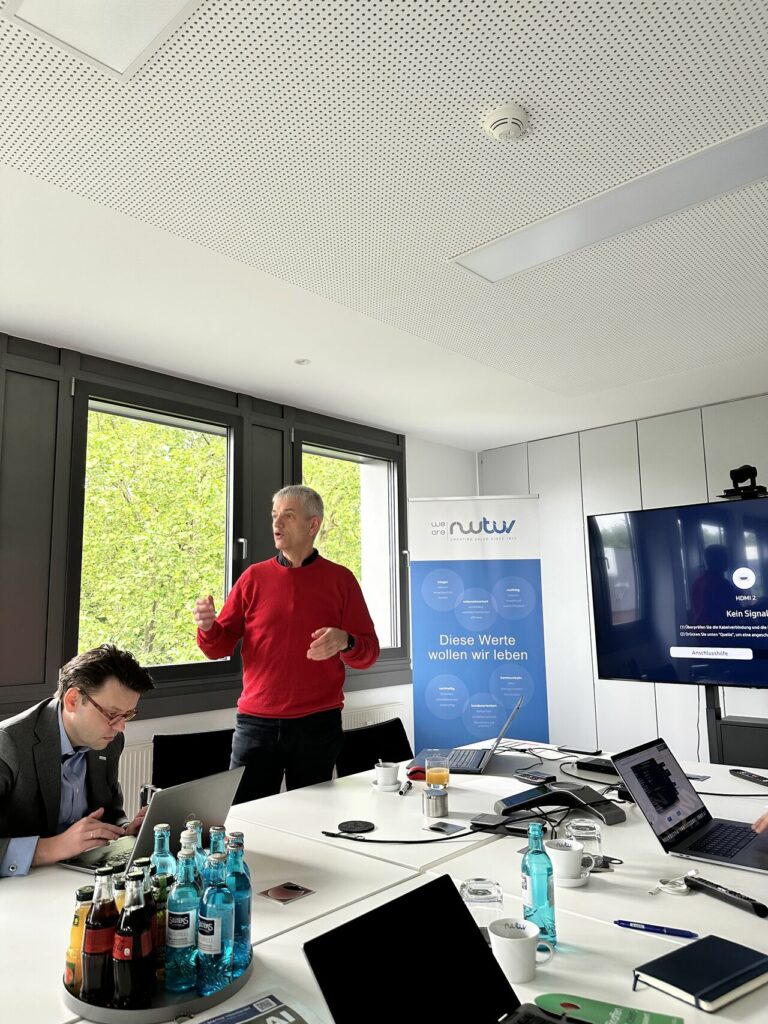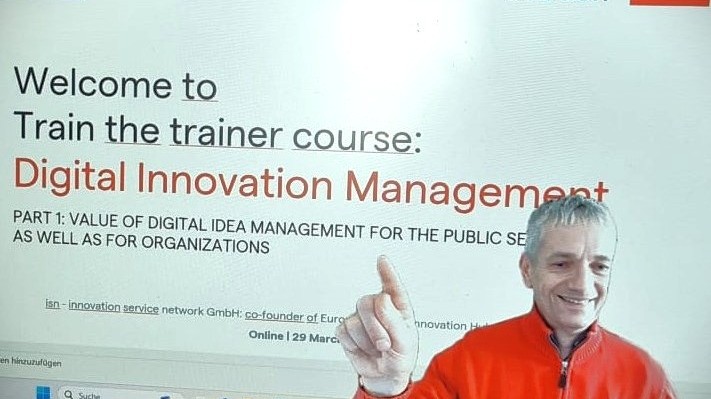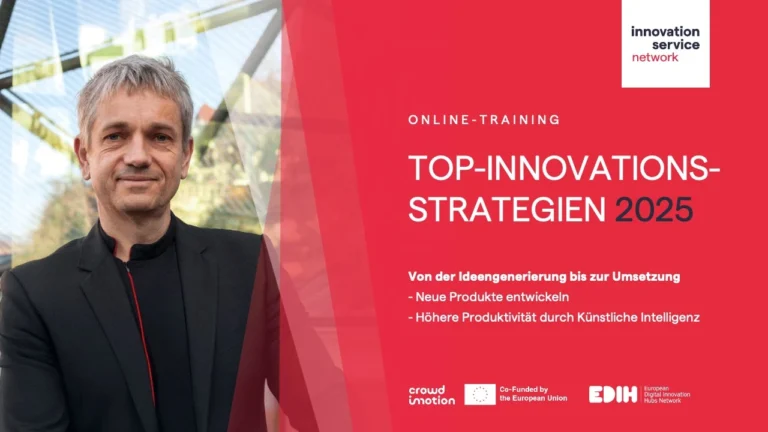

In 10 steps to an innovative company
"A thought cannot awaken without awakening others."
Marie von Ebner-Eschenbach
If the thought is a brilliant idea, it takes many "wake-up calls" until it is put into practice. Unfortunately, we are world champions at explaining to ourselves and others why something does not work. For this reason it is very important in companies to offer organizational and communicative feedback loops and support for "flashes of inspiration". The idea mailbox on the wall, or now digitally on the intranet, has long since become obsolete. Anyone who has a brilliant idea wants to talk about it, to dispel their own doubts, and is usually too impatient to wait for weeks.
The further development and implementation of ideas therefore require transparency, feedback, persuasion and resources. If someone wants to implement an idea in the company, they need a "first follower", i.e. someone who supports the idea, gets involved and encourages them. Tip: If you see someone who is not getting anywhere with their idea, encourage them to continue working on it and offer your support!
Systematic innovation management in companies provides methods and tools for this. Twenty-five years ago, I was also inspired by the idea of building processes into companies, where ideas are thrown into a funnel and then, after several phases and states of the idea (stages), "fresh innovations" fall out at the end of the process. Working with many companies and also the public sector has shown that rigid process models do not work and today they are also too cumbersome and slow. You cannot "prescribe" innovation processes, especially in the early stages where idea development is involved.
The key moment for me for all that I recommend today as an "operating system for innovations" and also support in the implementation was an inspiration from my colleague Prof. Peter Kruse. He has also been working on brain research, trying to model the functions of a human brain as a basis for innovation systems in organizations.
As we know, humans have a great neuron network that is able to constantly adapt to new challenges and situations and to learn until old age. This gave me and my team the idea of incorporating a "network operating system" for innovation management in companies as a second organizational form alongside the hierarchy. We enable the networking of minds (as an analogy to neurons) via digital social functions on innovationsplatform.v3, making it possible for an employee from Shanghai, an idea developer from Leoben Hinterberg, to give feedback and follow her idea.
Today, we see from many success stories in practice that this decision to rely on (digital) networks was the right one. Today, it goes even further: Other functions in companies or entire companies are also increasingly following the logic of a network organization, such as oose in Germany, which has restructured itself from a company to a self-organized cooperative.

Back to practice: Currently, when implementing innovation management, we rely on a combination of these two "operating systems" of a company. In the hierarchy, binding decisions are made, and in the network, new ideas are generated in an agile and interactive manner and ultimately innovations are created via digital feedback loops (lead users, customer feedback). Our claim for this network is that EVERYONE can be part of future projects without having to know much about the discipline of innovation! This results in some roles in the company that are important for modern innovation management.
Modern innovation management needs a communicative hub in person. The innovation manager leads and moderates the innovation process. The innovation manager develops and implements innovation strategies, leads the innovation project team, mobilizes resources and monitors the development and implementation of innovations. This is an exciting but very challenging job!
Decides on the content of innovation initiatives and priority programs, adapts the innovation process if necessary. The innovation team is composed of different positions in innovation management and works strategically and operationally in innovation management. In larger or distributed companies, there are often several innovation managers (e.g. per business unit).
Ambassadors are proactive, future-oriented personalities and are part of the innovation network in the company. Innovation ambassadors "fire up" innovation activities and are contact persons for innovation issues at eye level. In production-oriented companies, they are the first point of contact in the respective department for idea generators who cannot use digital tools. Every employee in a company should know who is the first point of contact for ideas and improvements.
Strategic steering body, mainly made up of members of top management. The board makes the final decision on major investments, checks their impact and relevance. The Innovation Board decides on long-term innovation strategies in line with the corporate strategy and is the first point of contact for the provision of resources.
The view beyond the horizon of one's own company can be depicted via trend research, but also in an exclusive network of people. An advisory board has the task of periodically reflecting on innovation management from a "helicopter perspective". It can be composed of CEOs, experts from other industries, but also researchers. A good example is the Innovation Advisory Board of TÜV Austria Holding, whose recommendations and inputs are also published regularly.
Project managers are responsible for managing and organizing innovation projects in order to bring ideas to fruition. A project manager plans, coordinates and monitors the work of the project team, ensures that schedules and budgets are adhered to and reports to the innovation manager.
The product manager is responsible for the development and monitoring of products or services. He identifies the needs of the market and customers, leads product development and marketing, and ensures continuous improvement of the product or service. He ensures that the focus is on customer needs and user experience.
This is the person responsible for identifying and evaluating technologies and trends that may be of interest to the company. The technology expert monitors technology development, identifies new technologies and helps decide which technologies are relevant to the company. In smaller companies, this role is usually directly anchored in the innovation management staff.
What additional role did I forget that exists in your company? How many people work in innovation management at your company? Which (missing) role or position should you talk about soon with the management team or CEO? Is it clear to all managers what their role is in innovation management?
As always, I wish you a relaxing and creative Sunday!
Reinhard Willfort, Innovation Doctor, www.willfort.at





